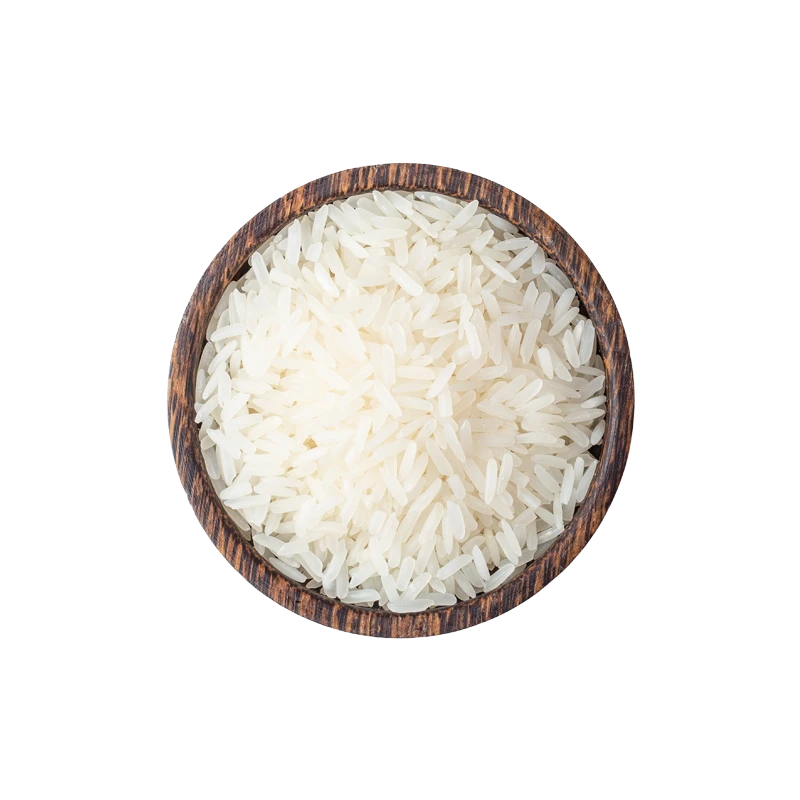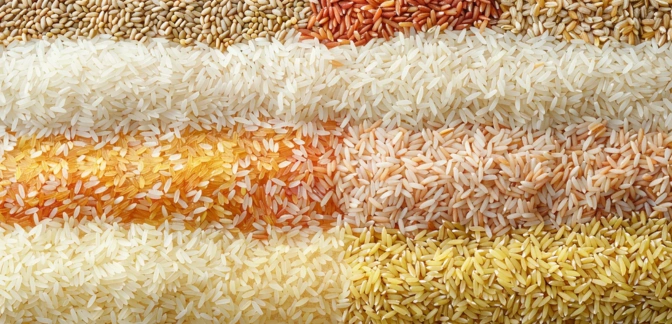White Rice — Nutrients, Health Benefits, And Shopping Tips

Written by Listonic Team
Last update on September 4, 2024
White rice nutrients
Nutrition facts
Amount per 100 g
Calories
🔥 130 kcal
| Nutrition per: 100 g | Value | % Daily Value* |
|---|---|---|
| Carbs | 29 g | 10.55% |
| Fiber | 0 g | - |
| Sugars | 0 g | - |
| Glycemic Index | 73 | - |
| Protein | 3 g | 6% |
| Sodium | 1 mg | 0.04% |
| Total Fat | 0 g | - |
*The % of Daily Value (DV) tells you how much a nutrient in a serving of food contributes to a daily diet. 2,000 calories a day is used for general nutrition advice.
White rice facts & tips
Health benefits
- Provides sustained energy from complex carbohydrates, making it a good source of fuel for the body and brain.
- Easy to digest, making it suitable for individuals with sensitive digestive systems or those recovering from illness.
- Low in fat, making it a heart-healthy option when paired with nutritious ingredients.
- Contains essential vitamins and minerals if fortified, such as iron and B vitamins (like folic acid), which support overall health and well-being.
- Versatile and adaptable, serving as a base for a variety of healthy dishes and cuisines.
Health risks
- High carbohydrate content which can cause rapid spikes in blood sugar levels, particularly concerning for diabetics.
- Low nutrient density as white rice is primarily starch and lacks the vitamins, minerals, and fiber found in whole grain rice.
- Potential for overconsumption due to its palatable nature, leading to excessive calorie intake if not mindful of portion sizes.
- Potential for arsenic contamination as rice can absorb arsenic from the soil, which may pose health risks if consumed in large quantities over time, particularly concerning for infants and pregnant women.
How to choose white rice
White rice should have a clean, uniform appearance with grains that are intact and not broken. When cooked, the rice should be fluffy and separate easily. The rice should not have any off odors or colors, which suggest proper storage and handling.
Avoid white rice that smells musty or is discolored, as these are signs of poor quality or improper storage. Rice that is sticky or mushy after cooking should also be avoided, as it indicates that it is either over-aged or of a low-grade variety.

How to store white rice
White rice should be stored in an airtight container in a cool, dry place. Proper storage keeps it fresh and free from pests for up to a year. A pantry or kitchen cabinet is ideal.
Exposure to moisture can cause rice to spoil and develop mold. Avoid storing near strong-smelling foods, as it can absorb odors. Ensuring the container is tightly sealed keeps the rice fresh and prevents contamination.
✅ Extra Tip
How long does it last?
White rice can last for 4-5 years when stored in an airtight container in a cool, dark place. Cooked white rice should be consumed within 4-6 days if kept in the refrigerator. For longer storage, cooked rice can be frozen for up to 6 months.
What to do with leftovers?
Leftover white rice can be used in a variety of savory and sweet dishes. Reheat it and serve as a side for stir-fries, curries, or grilled meats, or mix it into a fried rice with vegetables, eggs, and your choice of protein. White rice is also great when added to soups or stews, where it helps to thicken the broth and add texture.
Use leftover white rice in a rice salad with chopped vegetables, herbs, and a tangy vinaigrette, or mix it into a casserole with cheese, vegetables, and meat for a hearty meal. If you have a lot of white rice, consider making a batch of rice pudding with milk, sugar, and spices for a comforting dessert. White rice can also be used as a filling for stuffed vegetables, like peppers or tomatoes, or added to a grain bowl with roasted vegetables and a protein of your choice. For a quick snack, try making rice balls filled with cheese, meat, or vegetables.
👨⚕️️ Medical disclaimer
Discover products from other categories
Listonic Team
Fact-checked
Our editorial team checked this article to make sure it was accurate at the time of publishing it.
Get the top-rated shopping list app

white rice
1 piece
Outline







